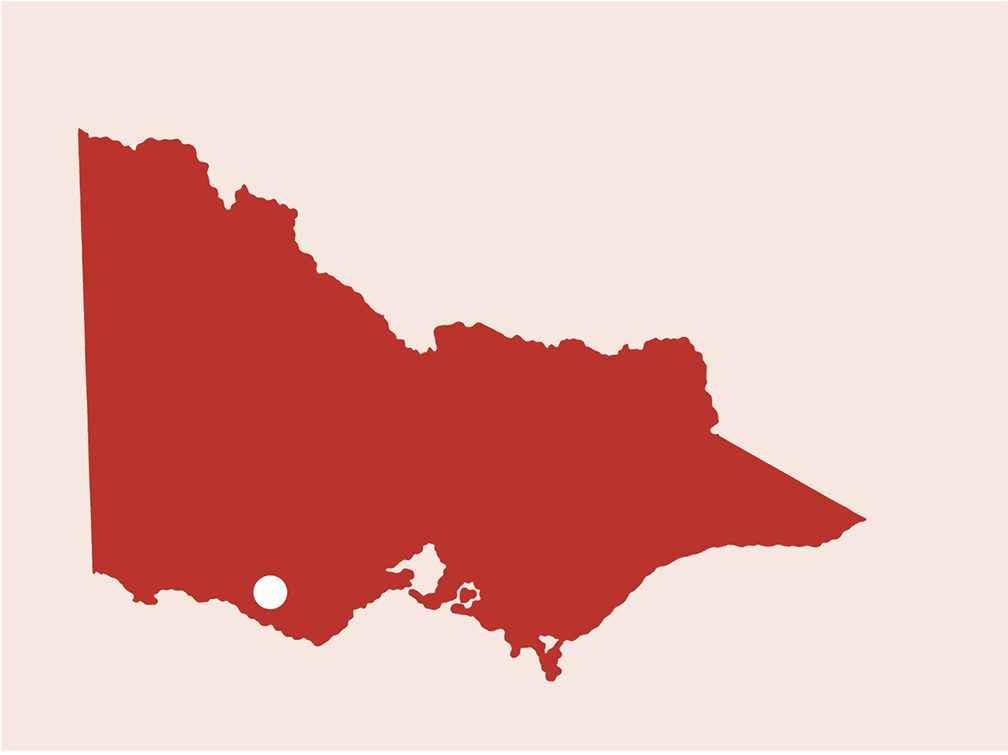Victorian Landcare Magazine - Summer 2023-24, Issue 86

The Basalt to Bay Landcare Network (BBLN) was established in 2008 to increase, protect, and enhance the land, soil, water, agricultural and biodiversity productivity of their region. The network covers 548,100 hectares in Moyne Shire in south-west Victoria.
I joined BBLN in 2012 as a part-time Landcare facilitator to work with members and communities on increasing the amount of native vegetation across our region.
Landcare facilitators need to have a range of skills, experiences, and ideas. Energy, resilience, creativity, curiosity, flexibility, and the ability to solve problems are critical. The Landcare facilitator’s skills are then shared, grown, and further expanded with our groups and communities.
It was time for some problem solving. Without guaranteed funding programs to encourage farmers to plant trees we had to find another incentive. Farmers were telling us they needed to know the economics of the equation. How would establishing on-farm plantations and shelterbelts benefit their businesses?
In 2014 BBLN commissioned a landmark report – The Economic Benefits of Native Shelterbelts (EBONS) to clearly articulate more than 40 years of research that proved planting native shelterbelts was good for the economy of farm businesses.
It’s one thing to produce a report, but if nobody reads it or uses it then it’s dead in the water. As soon as a draft of the report was ready, I shared it with every peak Landcare and agriculture body in Australia and asked them to read it and provide feedback.
Landcare facilitators need to have a range of skills, experiences, and ideas.
I put special effort into approaching the national industry bodies that represent the landholder farming base in our area – cattle and sheep. Our first endorsement of the EBONS report came from Meat and Livestock Australia (MLA). Their mission is to collaborate with stakeholders to invest in research, development and marketing initiatives that contribute to producer profitability, sustainability, and global competitiveness. The endorsement from MLA opened the door to a partnership with BBLN. We now work with MLA to share information and education about the benefits of native vegetation and Landcare. BBLN can help MLA achieve its mission at a local level.

Above: James Glasgow direct hand seeding a self-funded shelterbelt on former cropping land at Warrong. The rocks were dragged out of the paddocks when it was cropped by a past owner. The site is now fenced for habitat.
This partnership was further invigorated in 2019 when MLA set a target for the red meat industry in Australia to be carbon neutral by 2030. MLA identified planting vegetation for shade and shelter as number four in the top 10 actions producers can take to work towards becoming carbon neutral by 2030. Here was a total endorsement of the EBONS report.
Our partnership with MLA is continuing. The Spring 2022 edition of Meat and Livestock Australia Feedback Magazine featured an article about BBLN’s carbon project with Moyne Shire Council. This article reinforces the link between carbon neutral actions and Landcare. It is another acknowledgement of Landcare’s role in supporting the practical, grassroots building of climate resilience, emissions storage, and biodiversity habitat in farming landscapes across Australia.

Above: The direct seeded shelterbelt at Warrong one year later.
Our network has come a long way in the last 10 years and I’m proud to have been part of the journey. Facilitation work is always throwing up new challenges, but there’s one constant we need to be aware of. Landscape change doesn’t happen in isolation. We need to be alert for partnerships and then commit to making them as productive as possible for all partners.

Above: Landcare shelterbelt with tree guards on a rocky outcrop at Aringa North Station. This shelterbelt was funded by the Moyne Community Carbon Project in 2021.
Lisette Mill was Landcare Facilitator for the Basalt to Bay Landcare Network, and this role was funded through the Victorian Landcare Facilitator Program.
For more information email facilitator@basalttobay.org.au

Above: